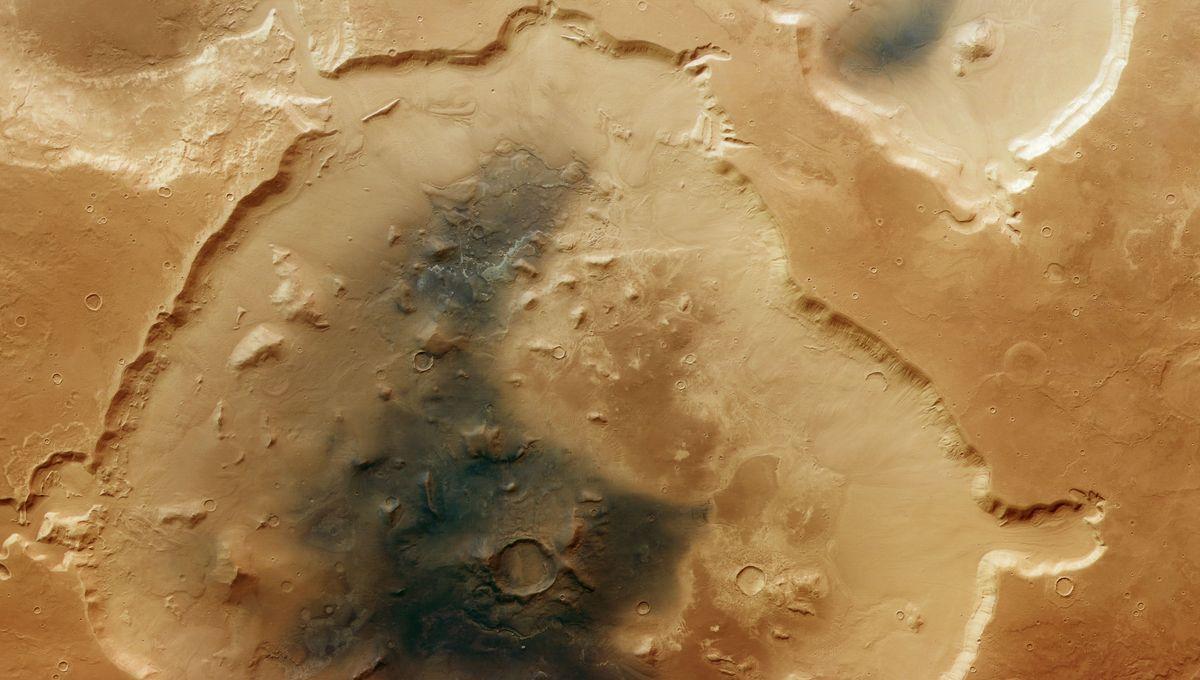Mars is a frigid desert all over, but no two places on the Red Planet are exactly the same. There are craters, fluvial valleys, volcanoes, deep canyons, and fields of dunes. But you can also find places that have a little bit of everything, such as Deuteronilus Cavus, a peculiar crater that formed on Mars between 4.1 and 3.7 billion years ago. The crater has so much geology that it makes it difficult to summarize all of what is going on there. New observations by the European Space Agency’s Mars Express, including a 3D reconstruction of the crater, show off the geological smorgasbord of the region.
Since its creation, Deuteronilus Cavus has been shaped by liquid water and by ice, making it almost twice as wide as it was originally. The plane around the crater was volcanic in origin, and the evidence of that is found in and around the crater. The crater is 120 kilometers (75 miles) across, and is peppered with rocks, so much that researchers compared it to a "rocky road" cake, but these Martian “marshmallows” are actually structures that couldn’t be eroded. The evidence for water flowing and glacial interactions can be seen at the rim of the crater, where it is clear that water has carved a path from beyond the crater, eventually eroding part of the rim. It does not have a delta, like Jezero Crater, where Perseverance has been exploring for several years. The bottom of the crater, at the base of the rim, also reveals smooth tongue-shaped ends of rock-covered glaciers. These “debris aprons" are formed when ice and rocks are mixed during a glacial period and move downhill. The crater currently has a mild climate for Mars, but Mars’s axial tilt moves a fair bit, and in the past, this region experienced much colder conditions. Evidence of water flowing and glacial tongues indicates a much wetter past for this crater. Image Credit: ESA/DLR/FU Berlin The volcanic evidence is both subtle and past. Outside the rim of the crater, there are wrinkles in the rock. The terrain is mostly smooth with occasional subtle ridges. The ridges were evidence of lava flowing and then cooling. However, the most obvious sign of volcanic activity is spread throughout the crater for everyone to see. The dark material is likley volcanic ash and dust that may have interacted with a body of water that sat in the center of the crater. Image credit: ESA/DLR/FU Berlin The dark marks across most of the crater floor are volcanic ash, blown by the wind and accumulated at the bottom of this vast depression. But there str also shining deposits down there, likely clay and volcanic ash mixed together, suggesting that water might have pooled here for a while.






